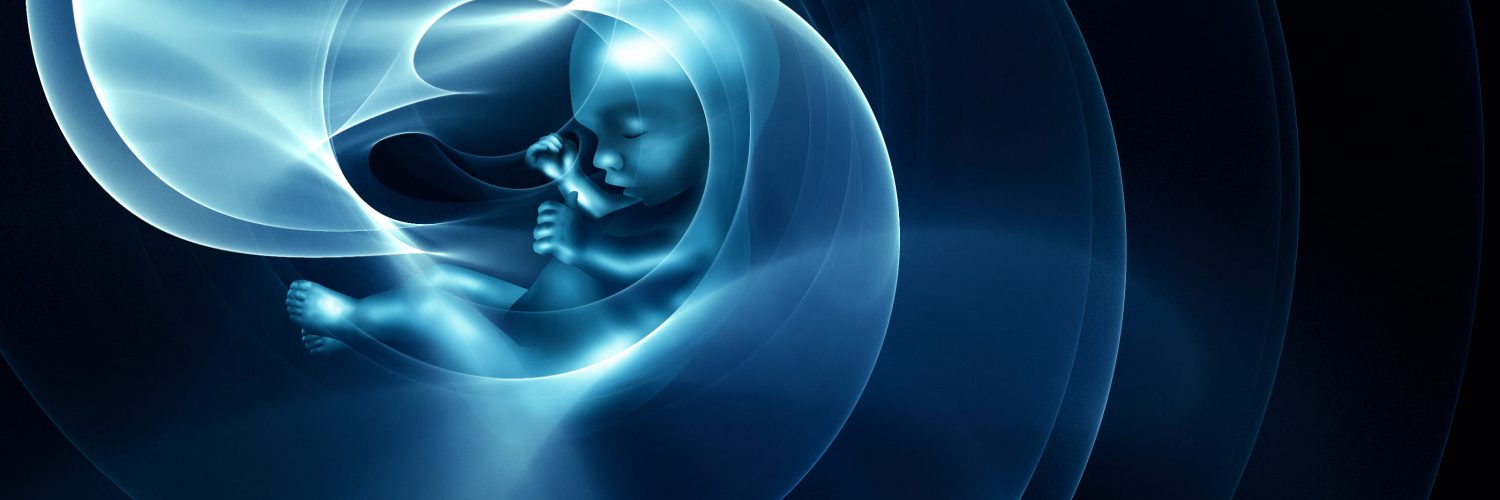Halacha has confronted many complex questions over the past century as a result of enormous advances in medicine and technology. The field of fertility and reproductive medicine is no exception. If anything, reproductive medicine stands out in the Halachic-medical literature for the variety of Halachic questions which it has raised. We will deal with one such question in the following essays.
As fertilization techniques have been developed, methods that were previously unthinkable are now readily available. One such possibility is fertilization with the sperm of a man who is no longer alive. Two common scenarios in which this could occur include:
- Sperm extracted from a living man who subsequently dies. In this instance, a woman is fertilized with sperm deposited by a man on his own initiative prior to his death. This is especially common in the case of those diagnosed with cancer, who take this step before commencing treatment in order to use the sperm after they are cured (and/or after finding a suitable mate) out of fear that his sperm quality will be compromised by the treatment. Unfortunately, since some cancer patients die many of them leave a will in which they leave instructions for how to use their sperm. In other cases, even if they do not leave specific instructions, their former spouses or parents may wish to use the sperm “l’Hakim Zera” – to establish offspring for the deceased.
- Sperm extracted from the body after death. In this scenario as well, the deceased may or may not have left behind a will. There are two methods for extracting sperm from a dead person. The first is surgical dissection of the testes and removal of the sperm. The second is the use of electronic stimulation to trigger ejaculation. This is only possible with a patient who has been declared dead[1]within the previous 12 hours and cardiopulmonary function has been artificially maintained.
Recent decades have seen numerous articles written on this subject. Many jurists and ethical scholars have dealt with this and there are several opposing viewpoints. In the next three essays, we will address this issue extensively. This essay will focus on the prohibition of defiling a corpse (a “Meis”), and ramifications for extracting sperm from the dead in either of the two methods described above.
The next essay will deal with the questions of neglecting or delaying the Mitzva to bury the dead, and the prohibition to derive benefit from the dead that must be addressed when using the sperm of a deceased individual. The third essay will deal with more general questions such as the relationship of a posthumously conceived child to his father, a model for decision-making, and more.
The present discussion focuses on Halachic questions exclusive to the extraction of sperm from the dead.[2] Two fundamental questions are pertinent: First, is the extraction of sperm considered a defilement of the Meis? Second, does using the sperm constitute neglecting the Mitzva of burial?
It is Asur Min haTorah to defile a Meis. However, numerous parameters for this Isur are advanced by the Poskim. Of relevance to this discussion, the Binyan Zion[3] (171) cites the Maharam Shick[4] who proves from the fact that it is permissible to dissect a dead woman to remove a fetus from her womb (Arachin 7a), that the prohibition of defiling a Meis is set aside in order to save a fetus. The Binyan Zion rejects this proof on multiple counts, one of which is that caesarean sections are similarly performed on living women, and therefore a cesarean should not be considered the defilement of a Meis:
It cannot be pronounced as defilement of a Meis unless it causes contempt and disgust for the dead person in the eyes of the onlookers. But to extract a fetus by surgically cutting open her abdomen – who says that this is a defilement, given that this is also sometimes performed on living women as a medical procedure?
According to this reasoning, the extraction of semen through electronic stimulation would certainly not constitute defiling a Meis, both on the count that this procedure does not make the dead worthy of contempt and disgust in the eyes of the onlookers, and on the count that this is an accepted procedure among the living as well. However, surgical dissection of the testes, would be prohibited, as these two reasons do not apply.
We find a similar argument to the Binyan Zion in a famous Teshuva of Rav Moshe Feinstein zt”l (Igros Moshe, Y.D. 2:151) who permitted a posthumous biopsy for the purpose of medical research of a disease:
But it seems in my humble opinion that if they do not dissect the organs nor open his neck and abdomen – [but] they merely wish to insert a needle to procure some fluid to obtain some knowledge pertaining to the disease – this would not be considered defilement because this is commonly performed even on living people in our times. Therefore, it is clear that this may be permitted. The same is true of drawing blood for testing etc. by way of a needle – this is not a defilement and it should be permitted. And though I have not found this explicitly stated, it is clear, in my humble opinion. Therefore, that which you have heard that by inserting an electronic needle into the body of the deceased, every disease can be detected – which the doctors need to know, if this is true, it seems that it should not be forbidden, because there is nothing defiling about it.
Rav Moshe implies that whenever there is no change in the outward appearance of the Meis, it is not considered a defilement, as long as the procedure is similarly performed on the living. It is not clear how Rav Moshe would rule on surgical procedures that involve cutting organs, but which are commonly performed on the living as well. It seems likely that since such procedures leave conspicuous damage, it would be considered a defilement even though the same procedure is performed on the living. In the context of our present discussion, the Igros Moshe’s position on the two methods of extraction matches that of the Binyan Zion. Electronic stimulation is permissible, but dissection of the testes is not.
Up to this point, we have assumed that extracting sperm through surgery is considered defilement of a Meis. However, even if we accept this assumption (and similarly if one was to argue that electrically-induced ejaculation also constitutes a defilement of the dead), it may be possible to differentiate between a case in which the deceased specifically instructed us to do so, and a case in which his wishes are unknown.
The Rashba (Shu”t 1:369) was asked about an individual who had instructed his sons to bury him in his ancestral burial site. On the day of his death they were unable to fulfill his request and were forced to temporarily inter him in another grave. A short time later, they wanted to fulfill his will and relocate his remains to the ancestral burial site. The problem was that his flesh had not yet fully decomposed and emitted a foul stench, thwarting the possibility of transferring him. They asked the Rashba whether it would be acceptable to pour lime over the remains to expedite the decomposition of his flesh – in other words, would such an action constitute defiling the Meis or not. This was the Rashba’s reply:
Any procedure of this type, which is performed to rapidly decompose his flesh in order to carry it to the location which he instructed, is permissible. For there is no issue of defilement here. Nor is there any issue of pain here, for the flesh of the dead cannot feel the scalpel let alone the lime. And embalmers tear them open and remove their gut. And there is no concern of either pain or defilement.
We see from these comments that it is permissible to tear open a Meis in order to embalm him even though there is no Halachic requirement to do so. Though his body is torn open it is considered respectful and dignified because it is performed out of obedience to his will. If so, it should be similarly dignified and permissible to perform postmortem surgery on a corpse’s testes when the deceased has specifically informed that this is his will.
However, one could make the following distinction: The Rashba dealt with embalming and the like, whereby the desired outcome was enhancing the dignity of the corpse itself, via embalming it or arranging that it be buried in its chosen final resting place (albeit these enhancements have no objective meaning nor Halachic advantage). Therefore, the necessary actions for achieving these final outcomes are not considered defilement of the Meis. On the other hand, in our case, we are attempting to fulfill the will of the deceased for a purpose other than enhancing the dignity of his corpse (i.e., to establish offspring). These may not be sufficient grounds to permit defiling the Meis.
However, we may adduce proof from a ruling of the Noda b’Yehuda that it is permissible to defile a Meis to honor the deceased.
The Noda b’Yehuda (Tinyana, Y.D. 210) wrote a famous Teshuva regarding defiling a Meis for medical research (the aforementioned Igros Moshe deals quite extensively with this Teshuva). He invokes the Pikuach Nefesh of those patients who would potentially benefit from the medicines developed through the research, as a possible reason to permit it. One of the Noda b’Yehuda’sproofs is the Gemara in Chulin (11b), which attempts to find a Torah source for the principle, “Haloch Achar Rov – you may follow the statistical majority”. One of the possibilities suggested by the Gemara is to derive this principle from the law of a murderer, who is sentenced to death, even though there are a minority of “Treifos” (sick people who cannot survive much longer, and one who murders them is exempt from the death penalty). If we do not say Haloch Achar Rov, how can we know for a fact that the victim was not a Treifa? Undoubtedly, the Torah must be telling us Haloch Achar Rov and we can assume that the victim was not a Treifa! To this the Gemara counters:
And if you say that we should examine him – surely he will become defiled! And if you say that we should defile him because of this person’s lost life, we should still be concerned that there was a preexisting puncture wound in the location of the [injury inflicted by the] sword!
In other words, the Gemara entertains the thought that the proof may be rejected and there is no proof that Haloch Achar Rov. Perhaps a murderer can indeed not be sentenced to death without a postmortem examination of the victim to confirm that he was not a Treifa. The Gemara rejects this as an impossibility as such an examination would constitute “defiling a Meis”!
The Gemara then queries whether it would be permissible to defile the Meis to establish the truth and permit sentencing the murderer to death. The Gemara responds that a postmortem examination would in any case not be sufficient to establish the truth without a shadow of a doubt, for it is possible that the victim had a preexisting Treifa injury in the very location in which he was fatally stabbed. Of course, this cannot be ruled out now that he has stab wounds in that very region. If so, the Gemara concludes that a postmortem examination is neither helpful nor required and our basis for sentencing a murderer to death must be Haloch Achar Rov.
The questioner to the Noda b’Yehuda understood that the Gemara’s suggestion to defile the corpse stemmed from the need to save the murderer from undeserved death in the event that the victim was a Treifa. He therefore saw this as evidence that it is permissible to defile a corpse in order to save another’s life. But the Noda b’Yehuda questioned this understanding, as the Gemara’s suggestion to conduct a postmortem was obviously not for the purpose of rescuing the murderer’s life (for that purpose, it would suffice not to examine the corpse and acquit the murderer due to lack of evidence). On the contrary – the examination was proposed in order to exact justice for the victim in the event that he was not a Treifa. He explains:
For if we will say that a murderer will never be killed without examining the victim, if so the defilement is to honor of the victim, and everything that is performed in his honor is not considered a defilement.
This indicates that there is no concern of defilement, not only when honoring a corpse, but even when according the deceased other forms of honor, such as exacting justice from his murderer. If so, there is more room to argue that the extraction of sperm for the purpose of establishing offspring for the dead, which is a far greater honor than convicting his murderer, would be permissible and not considered a defilement of the corpse.
In truth, in a case when the deceased specifically requested the posthumous extraction and use of his sperm, that being his will and dignity,[5] there is another perspective to consider. Assuming that the reason for the Issur of defiling a Meis is due to the honor of the deceased (thus it may be defiled when it contributes to his honor as stated above), it is possible that the deceased may be Mochel (waive)our duty to honor him. This question is discussed by two of the Acharonim – the Maharam Shick (YD #347) and Binyan Zion (ibid.).
The Binyan Zion, in the midst of an extensive discussion of the aforementioned Teshuva of the Noda b’Yehuda (which is primarily a discussion of whether medical research conducted with a Meis is considered Pikuach Nefesh), states that if a person waives his rights, it is permissible to defile his corpse. The Maharam Shick disagrees, citing the Chasam Sofer (Shu”t 2:336) that Mechila makes no difference. Support for this position is cited from the comments of the Rishonim regarding the obligation to bury the dead, where it is stated: “Ki Kilelas Elokim Taluy – For a hanging corpse is an affront to Hashem” (Devarim 21:22). They interpret this to mean that even after death, a human body retains some of the Tzelem Elokim –the image of God. According to this, Mechila would not be effective, for it is not his honor that is being waived but that of his Creator.
The Maharam Shick provides additional evidence from a Gemara in Maseches Sanhedrin (46b). The Gemara discusses what to do when a person leaves instructions not to be buried after he dies. It is apparent from the Gemara that if the basis of the Mitzva of burial is not to atone for the soul of the deceased but rather to prevent “disgrace”, the deceased has no authority to order that he not be buried. What is meant by “disgrace”? According to Rashi and Tosfos, it is the disgrace of the relatives of the deceased. According to other commentators, it is the disgrace of all living people (this will be discussed in detail in the next essay). The Maharam Shick argues that the basis of the law prohibiting the defilement of a Meis, similarly does not only concern the honor of the dead person himself but also the honor of all living people. If so, with regard to defiling the dead, the waiver of the deceased will similarly not be effective (this is all the more true according to the Chasam Sofer that doing so constitutes a violation of the Tzelem Elokim and the honor of his Creator).
However, the comparison between these two Halachos is questionable. The Maharam Shick’s comparison of the prohibition of defiling a Meis with the Mitzva of burial is not self-evident. On the face of it, the prohibition of defiling a Meis is specifically related to the deceased person’s personal dignity, whereas the Torah insisted on burial to prevent the dead being left to decay in public view, scattered like dung over the soil. In such instances, this clearly would be disgraceful to the family and to all living people.
To recap what we have learned:
With regard to the prohibition not to defile the Meis, there is scope to permit electrical stimulation as it does not change the body of the deceased, and is, moreover, a procedure commonly performed on the living. On the other hand, surgical dissection of the testes is likely a defilement of the Meis. In such instances, the Halacha would depend on the dispute between the Maharam Shick and the Binyan Zion as to whether the Mechila of the deceased is effective or not.
In the next essay, we will discuss the question of neglecting the Mitzvaof burying the dead, and the question of extracting benefit from the dead, along with other considerations.
[1] [Editor’s note: i.e.,brain death]
[2] Under what conditions is it permissible for a living man to ejaculate semen in order to deposit it for later reproduction (with his spouse)? This is a broad subject which we will not delve into here; we will relate to it as a fait accompli.
[3] R’ Yaakov Ettlinger of Altona (1798-1871). Author of Aruch l’Ner on Talmud Bavli, Bikurei Yaakov on Hilchos Suka, and Shu”t Binyan Zion.
[4] R’ Moshe Shick (1807-1879). Talmid Muvhak of the Chasam Sofer and one of the greatest Hungarian Poskim of his era.
[5] In the following essays we will clarify that without an explicit instruction, it is not at all clear that the deceased would have wanted a child and that this would constitute his honor, as unfortunately he will not be able to oversee the child’s education, besides other reasons.














